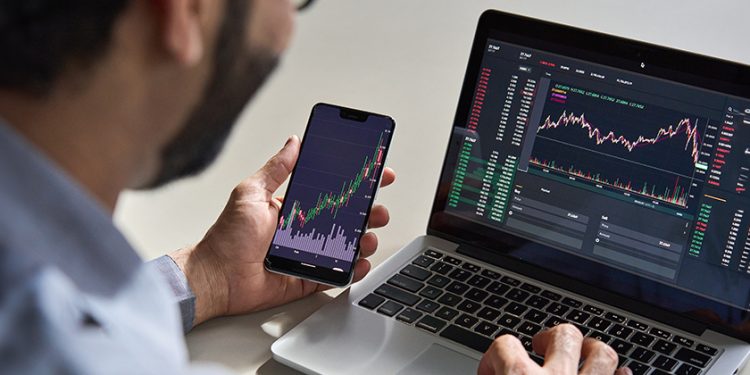- Last Updated: Jun 07,2024 |
- Religare Broking
In the dynamic landscape of modern finance, dematerialised (Demat) accounts have become indispensable tools for investors and traders. These accounts revolutionise the traditional approach to securities trading by digitising and streamlining the process. Understanding what is a Demat account and discerning how to trade in a Demat account are crucial steps for anyone venturing into the stock market. So, in this comprehensive guide, we delve into the A to Z of Demat account trading, exploring its intricacies, benefits, and how it empowers individuals to participate in the financial markets with ease and efficiency.
- What is a Demat Account?
- How to Open a Demat and Trading Account?
- Logging into Your Trading Account
- How to Trade With Demat Account?
- Stocks Selection to Trade
- Placing an Order
Topics Covered :
What is a Demat Account?
A Demat account is a virtual repository where securities and shares are stored electronically, negating the need for physical paper shares. This electronic account, provided by depositories such as NSDL and CDSL through intermediaries like brokers, facilitates the buying and selling of shares, providing a secure and efficient platform for trade in the stock market.
Your Path to Paperless Trading. Take the First Step with Religare Broking
The understanding of what is a demat account lies in its ability to simplify the trading process, offer a seamless transaction experience, and ensure the secure handling of securities. Moreover, trading with a Demat account offers various pros, including quicker trades, and access to all your securities in one place, and it mitigates the risks of handling physical certificates, such as theft, damage, or loss.
How to Open a Demat and Trading Account?
Embarking to open a zero brokerage demat account online involves a structured process, ensuring security and verification at every step.
Below is a systematic guide to facilitate the opening of a Demat and trading account:
Choose a Depository Participant (DP)
Select a DP registered with either NSDL or CDSL and ensure they offer online account opening services.
Visit DP’s Website
Navigate to the official website of your chosen DP and locate the option to open a Demat account.
Complete the Application
Fill in the online application form, providing details such as PAN, Aadhaar, and bank account information. Ensure to review demat account charges befor making any decision about your investment journey
Submit the Documents
Upload scanned copies of required documents, including PAN, Aadhaar, photographs, and bank statements/void cheques for verification.
Recommended Read: What is a Demat Account Number?
In-Person Verification
Some DPs may necessitate a video to validate the applicant’s identity and the authenticity of the documents.
Receive your BO ID
Upon successful verification, you will receive a Beneficial Owner Identification (BO ID), which allows you to access and operate your Demat account.
Start Trading
With the best demat account for trading active and linked to a trading account, you can commence your trading activities seamlessly.
Logging into Your Trading Account
Accessing your trading account is the crucial step that propels your journey into stock trading. To log into your trading account, navigate to your broker's website or trading platform.
On the homepage, locate the login option at the top right corner. Clicking on this will typically redirect you to a secure login page where you'll be prompted to enter your username and password. Ensure these credentials are kept confidential to safeguard your account.
Once entered, you may be asked to complete a two-factor authentication process for an additional layer of security, which may involve receiving a one-time password (OTP) on your registered mobile number or email. Upon successful authentication, you’ll gain access to your trading account, where you can learn how to trade in Demat accounts.
You can view your portfolio, explore different stocks, execute trades, and manage your account settings. Ensuring secure and precise access to your trading account is imperative to maintain the confidentiality and integrity of your trading activities.
Insurance Underwriting
Diving into insurance underwriting, it stands out as a fundamental element in crafting and issuing policies. The underwriters meticulously analyse risks tied to insuring an entity or asset. By scrutinising the applicant's details and the asset’s attributes, they determine the premium rates and establish the policy's terms and conditions, safeguarding both the insurer and the insured.
Securities Underwriting
Underwriting is crucial in the securities sphere, especially in public offerings. Underwriters, mainly investment banks, pledge to purchase and retail the issued shares to the public. This ensures the issuing entity successfully acquires the intended capital.
Loan Underwriting
Loan underwriting involves an in-depth assessment of an applicant’s creditworthiness when applying for a loan. The underwriters go through the applicant’s credit history and financial stability, determining the loan terms, interest rates, and loan amount to safeguard the lender from excessive risk.
Real Estate Underwriting
Underwriters in real estate evaluate risks inherent in financing a property purchase. This encompasses assessing the property’s value, evaluating the borrower’s creditworthiness, and foreseeing market fluctuations to ensure that the loan issued is secure and aligns with the borrower’s repayment capabilities.
How to Trade With Demat Account?
Trading with a Demat account encompasses a series of straightforward steps, ensuring transactions are executed efficiently and securely.
Before learning how to trade in a demat account, an individual must ensure the account is active and properly linked with an online trading account and a bank account. The sequence of actions for trading encompasses selecting stocks, determining order type (buy/sell), and executing the trade.
Select Stocks
Utilise research and analysis to identify which stocks to buy. Leveraging various analytical tools and platforms can facilitate informed decision-making.
Place an Order
Once you’ve determined which stocks to buy, log into your trading account, navigate to the section that allows you to place an order, input the requisite details, including stock name, quantity, and order type (market/limit), and proceed.
Execute the Trade
Upon confirmation, the order is placed in the exchange, and upon successful matching of the order, the stocks are either bought or sold.
Settlement
Post-execution, the transaction is settled, wherein bought stocks are deposited into, and sold stocks are withdrawn fromthe Demat account.
Review
Regularly review and manage your Demat account to ensure alignment with investment goals and risk appetite.
Stocks Selection to Trade
After knowing how to trade in a Demat account, it is essential to choose the right stocks. Choosing a company's stocks to trade in requires meticulous analysis and a thorough understanding of both the company and the market dynamics.
The first step in a company's stock selection involves conducting a robust fundamental and technical analysis, where you scrutinise a company's financials, such as its earnings, revenue, and profit margins.
Further, delve into its quarterly and annual reports to understand its financial health and future plans. Subsequently, technical analysis can provide insights into price movements and market trends, aiding in predicting future prices.
Recommended Read: Minor Demat Account in India
Additionally, consider the macroeconomic factors and industry trends before trading with a Demat account, ensuring your investment isn’t adversely affected by external factors. It is also imperative to explore the company’s leadership, governance, and any potential red flags that might impact its stock value.
Placing an Order
Upon logging into your trading account, navigate to the section designated for order placement, often labelled 'Buy/Sell' or 'Trade' to successfully place an order. Identify and input the stock symbol or company name in the designated field. Subsequent steps involve determining the number of shares to purchase and specifying the order type.
There are several order types, including 'Market Order', where you buy/sell at the current market price, and 'Limit Order', where you set a specific price at which to buy/sell.
Recommended Read: How to Choose the Best Demat Account?
Understanding how to trade in a Demat account is essential for modern investors. Furthermore, you may opt for 'Stop-Loss Orders' to mitigate potential losses, setting a specific price at which the stock will be sold if the price drops to that level. Another crucial aspect is determining the order's validity, selecting between 'Day Order', valid for the current trading day, and 'Good Till Cancelled', which remains active until manually cancelled.
Upon confirming the details and ensuring all parameters align with your trading strategy, click the 'Place Order' button. A final review window typically appears, allowing for a last check before finalising the order.













